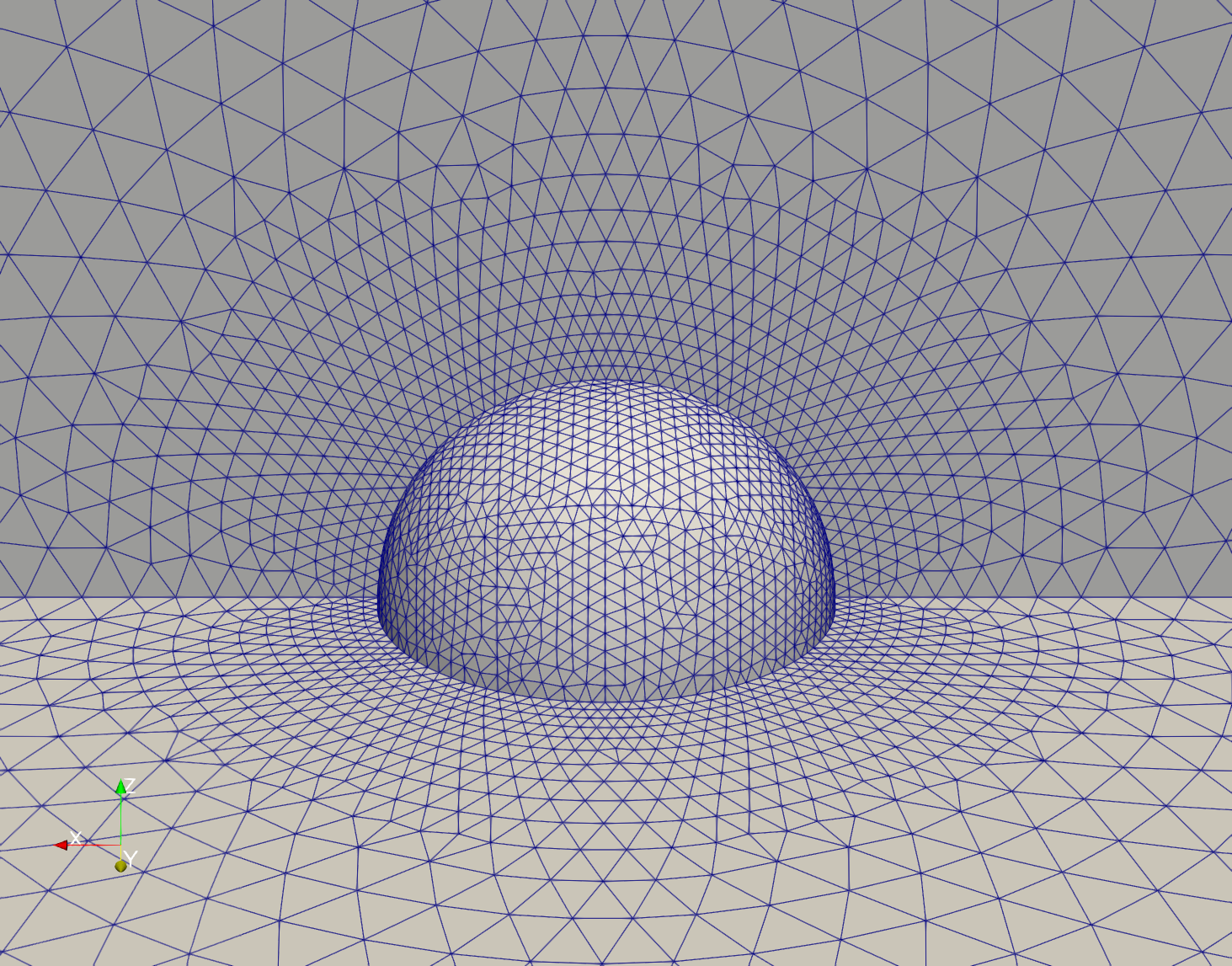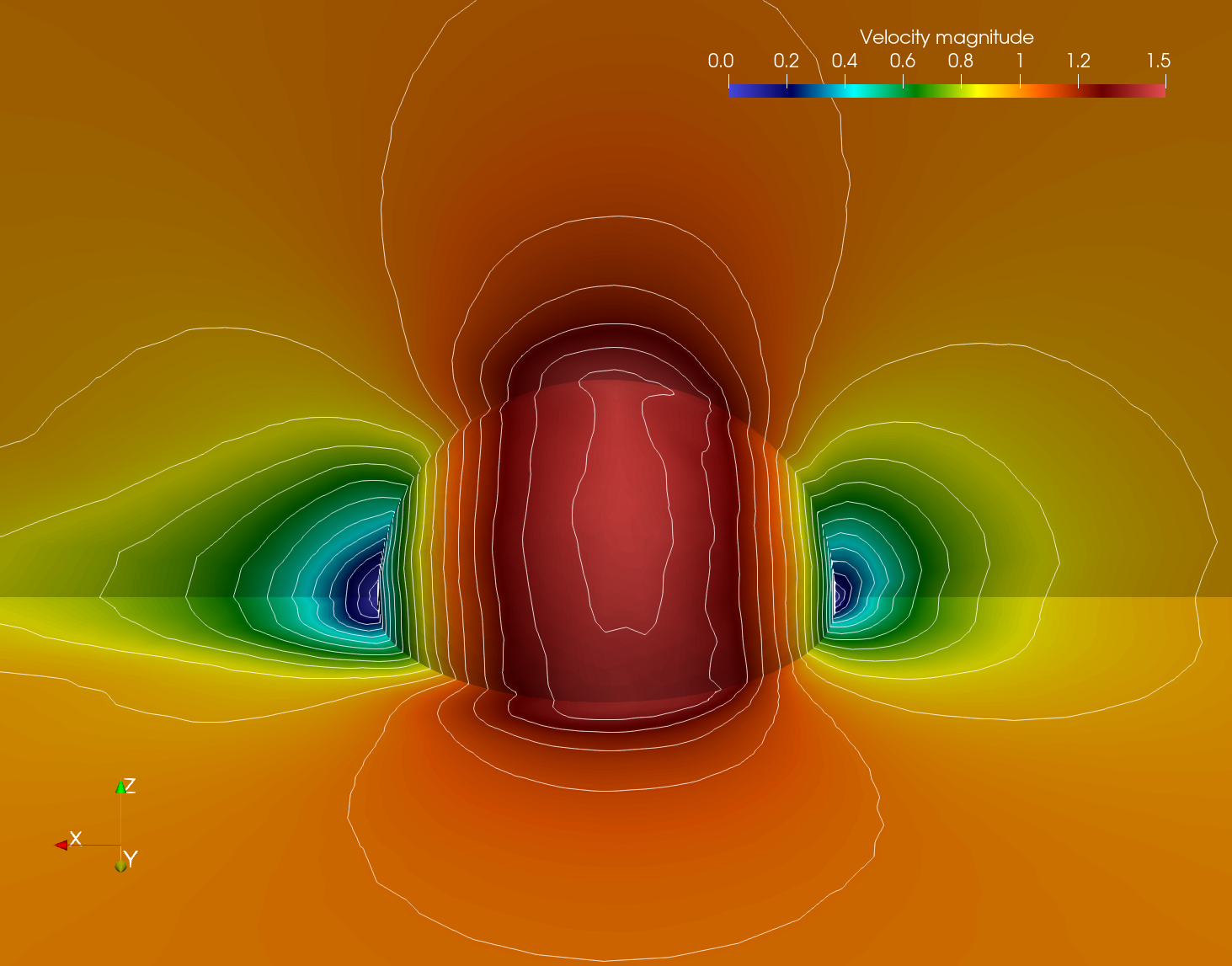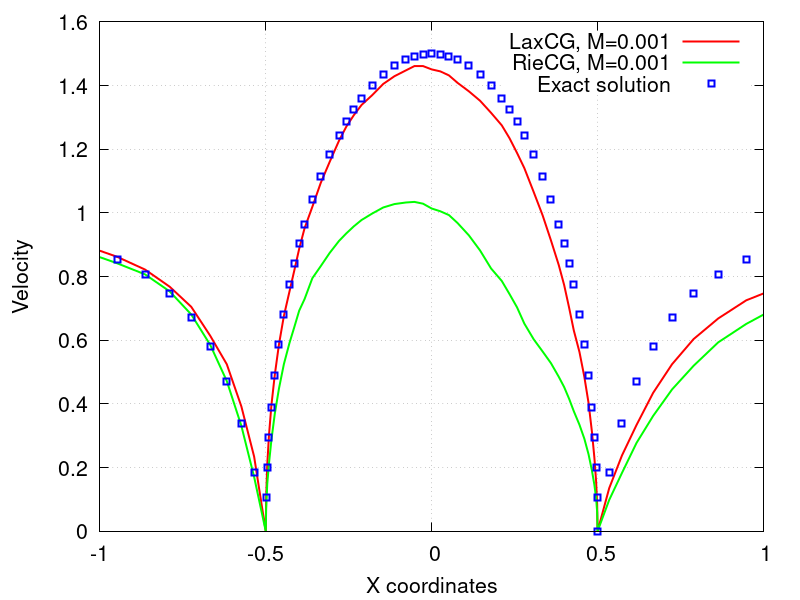LaxCG: Inviscid flow past a sphere
This example uses LaxCG in Inciter to compute the inviscid constant-density (incompressible) flow past a sphere.
While the exact solution of this problem is well-known from potential flow theory, computing such low Mach-number flow serves as a challenging problem for density-based solvers. Since the analytic solution is known, it can also be used to verify the correctness of the software implementation.
Problem configuration
The problem is configured with the free-stream Mach number of 0.001 to represent near-incompressible flow. Since the numerical solution converges to steady state, the most efficient ways to compute this problem are to use implicit time marching or local time stepping [1] of which the latter is implemented in LaxCG allowing larger time steps for larger cells.
Problem setup
Due to the spatial symmetry of the problem, only quarter of the sphere is represented. The computational mesh consists of 73,397 tetrahedra connecting 14,281 points, whose surface mesh is depicted below. The initial conditions prescribe the free-stream Mach number and the flow variables are non-dimensionalized and parameterized by this quantity to yield unit streamwise velocity in the X direction. Symmetry (free-slip) conditions are applied on the sphere and the symmetry surfaces, while characteristic far-field boundary conditions are applied on the rest of the domain boundary.

Code revision to reproduce
To reproduce the results below, use code revision 43ba64a and the control file below.
Control file
-- vim: filetype=lua: print "Sphere" nstep = 12000 ttyi = 1000 cfl = 0.7 solver = "laxcg" flux = "hllc" steady = true residual = 1.0e-14 rescomp = 2 part = "phg" mat = { spec_heat_ratio = 1.4 } -- free stream mach = 0.001 print("Free-stream Mach number = ",mach) ic = { density = 1.0, pressure = 1.0 / mach / mach / mat.spec_heat_ratio, velocity = { 1.0, 0.0, 0.0 } } velinf = ic.velocity bc_sym = { sideset = { 1, 2, 3 } } bc_far = { density = ic.density, pressure = ic.pressure, velocity = ic.velocity, sideset = { 4, 5, 6, 7 } } fieldout = { iter = 10000, sideset = { 1, 2, 3 } } diag = { iter = 10, format = "scientific", precision = 12 }
Run using 32 CPUs
./charmrun +p32 Main/inciter -i sphere.exo -c sphere.q
Visualization
ParaView can be used for interactive visualization of the numerically computed 3D fields as
paraview out.e-s.0.32.0Results only on the symmetry surfaces can be visualized by first stitching the partitioned surface output files into single surface output files, then loading them all into paraview:
Main/meshconv -i out-surf.1.e-s.0.32.% -o out-surf.1.exo Main/meshconv -i out-surf.2.e-s.0.32.% -o out-surf.2.exo Main/meshconv -i out-surf.3.e-s.0.32.% -o out-surf.3.exo
The velocity magnitude on the sphere and symmetry surfaces is depicted below, computed by the LaxCG solver.

The velocity magnitude extracted along the centerline and the sphere surface is depicted below computed by LaxCG. Also plotted is the analytic solution from potential flow theory and the solution produced by RieCG. As the figure shows the time-derivative preconditioning implemented in LaxCG produces a superior solution to RieCG without preconditioning.

References
- R. Lohner, Applied Computational Fluid Dynamics Techniques: An Introduction Based on Finite Element Methods, Wiley, 2008.